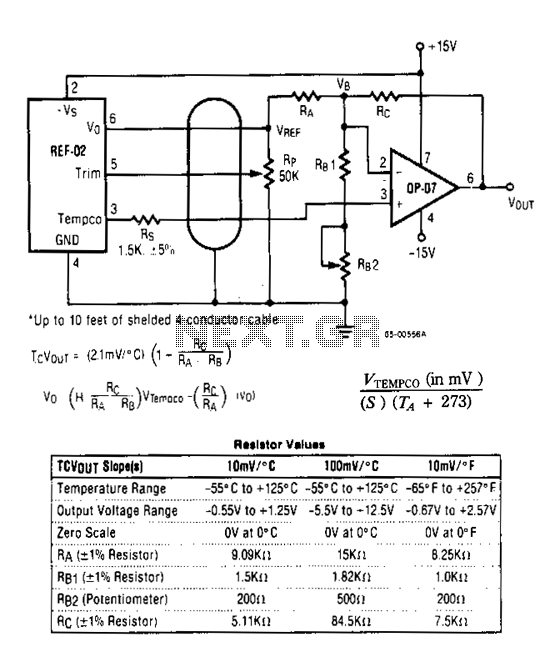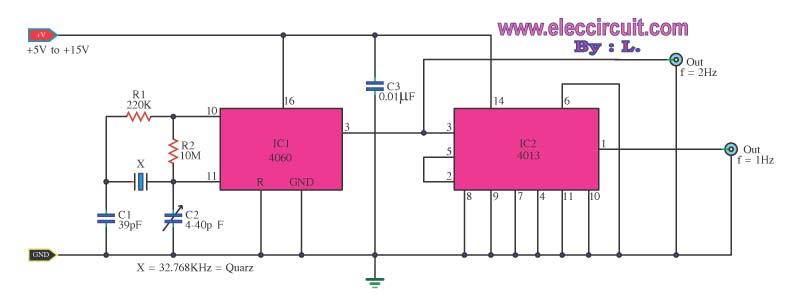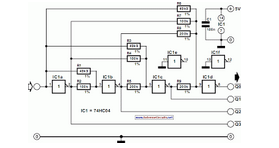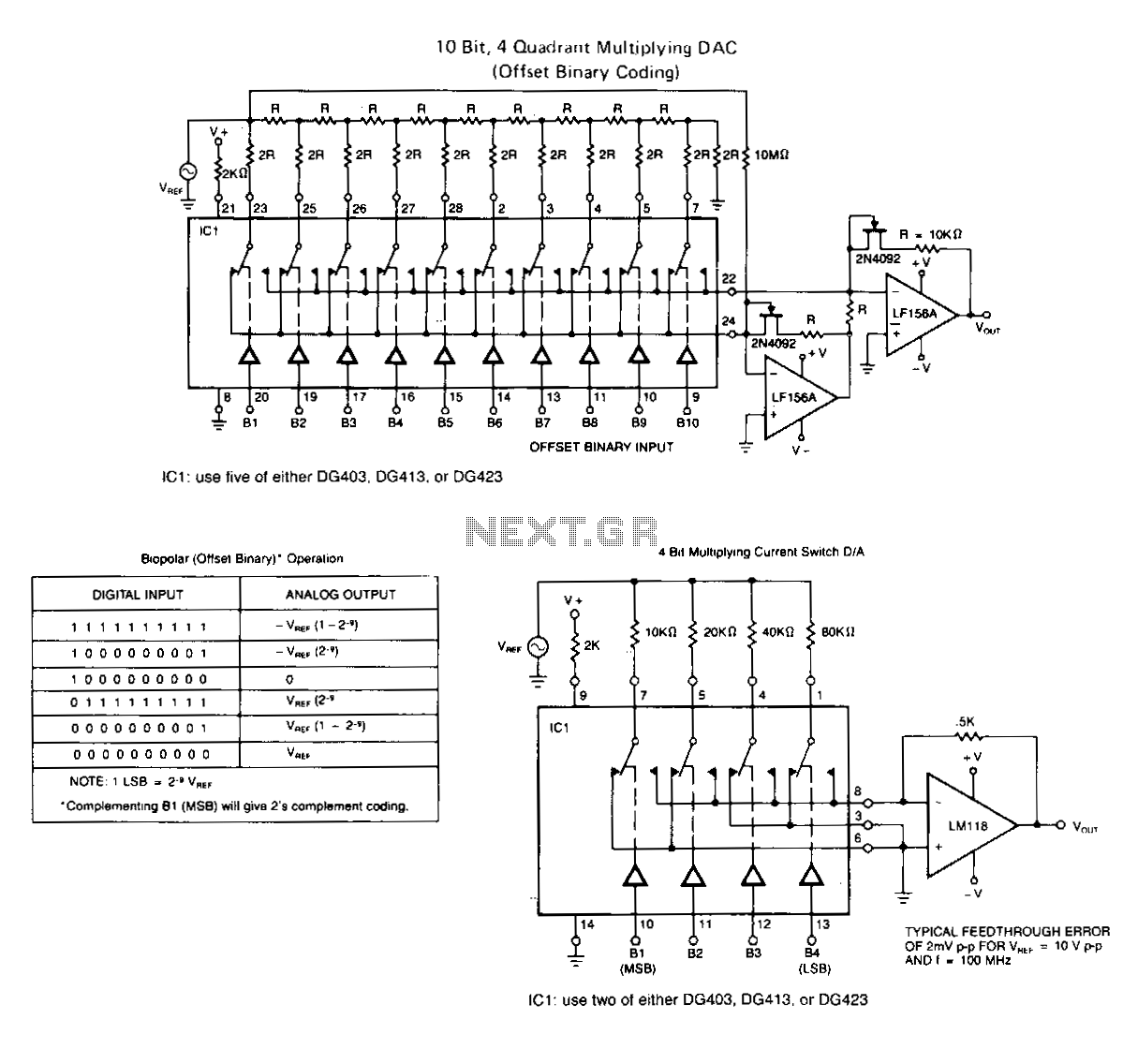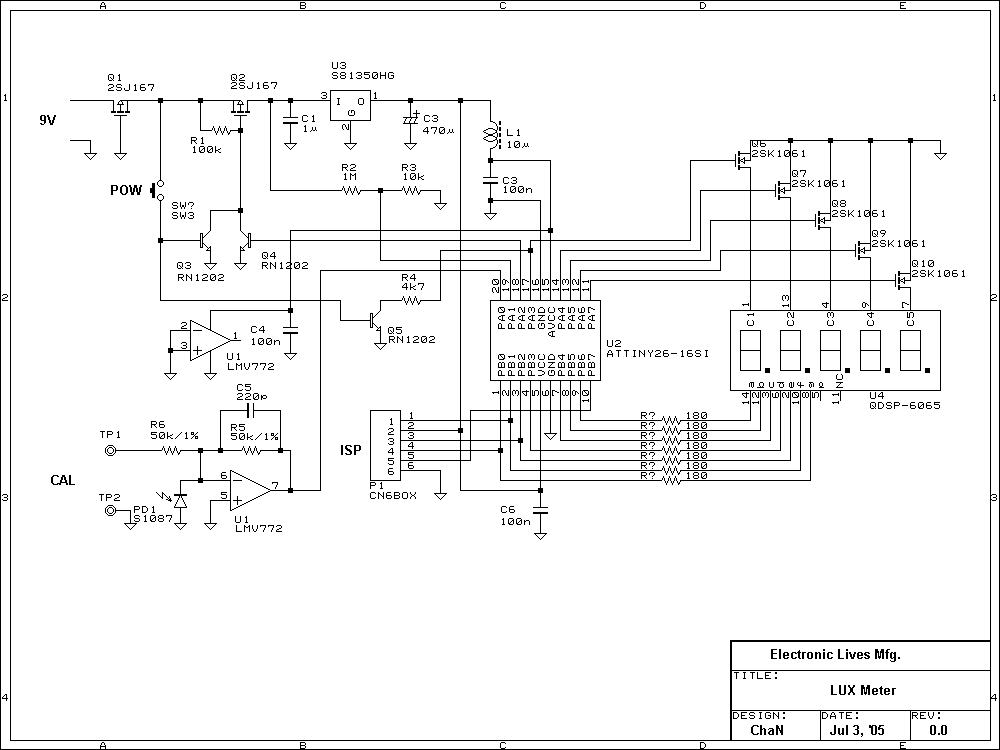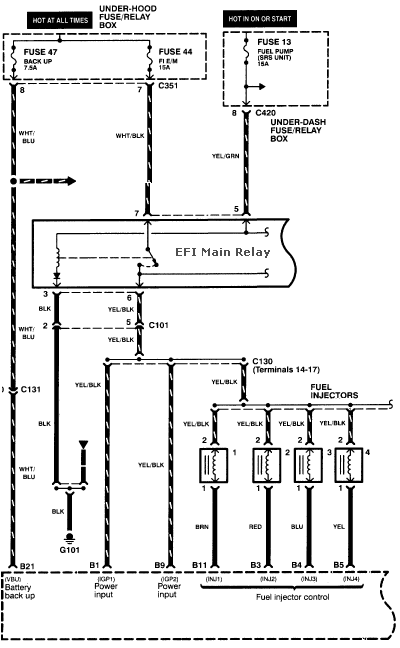
DIGITAL FUEL GAUGE
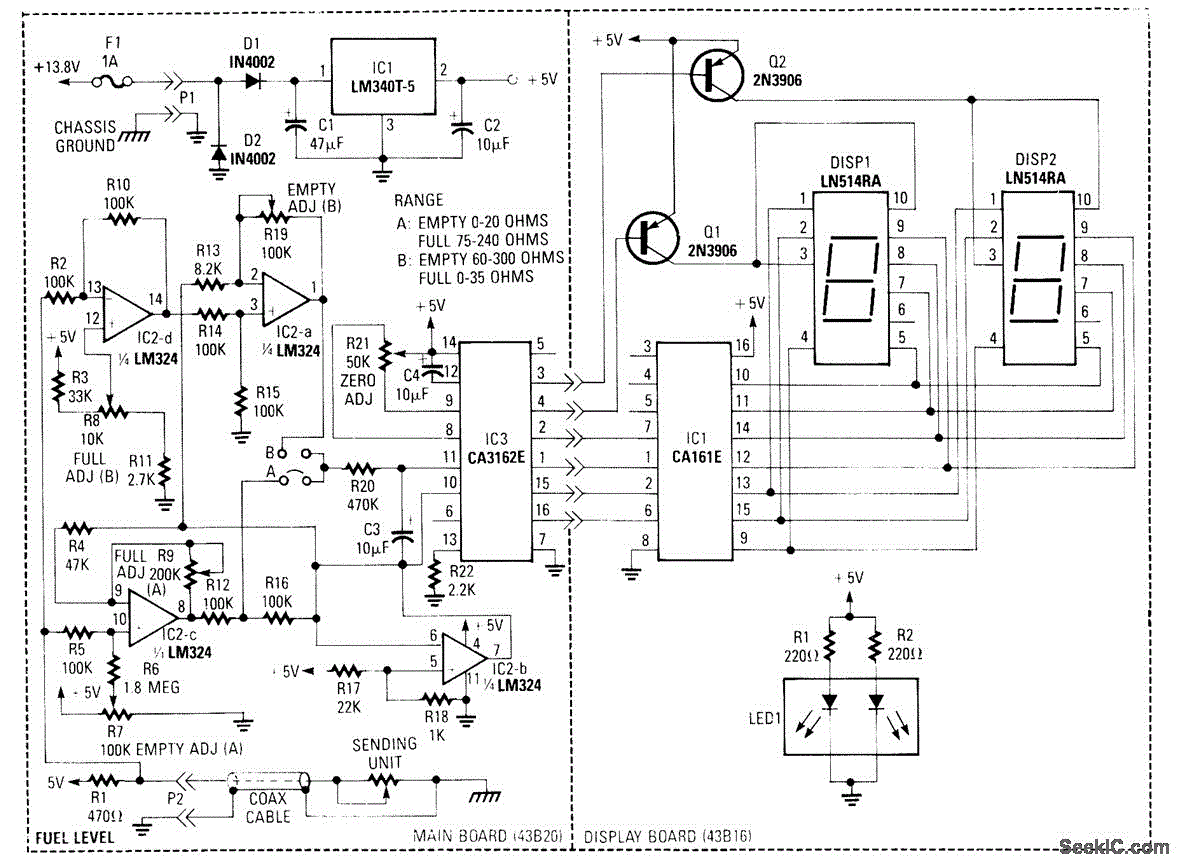
This circuit employs a digital voltmeter, consisting of IC1 and IC3, to indicate fuel quantity as a percentage of a full tank. It is designed to accommodate two types of fuel sensors: one with low resistance indicating a full tank and another with high resistance indicating a full tank. IC2 serves as a DC amplifier, providing both inverting (path A) and non-inverting (path B) outputs, along with calibration adjustments for each path.
The circuit is structured to facilitate the measurement of fuel levels in various types of tanks, utilizing a digital voltmeter to provide precise readings. The integration of IC1 and IC3 forms the digital voltmeter, which translates the voltage signal from the fuel sensors into a readable percentage format. The choice of fuel sensors allows flexibility in application; the low-resistance sensor is suitable for some fuel types, while the high-resistance sensor caters to others.
IC2 plays a crucial role in signal amplification, enhancing the voltage levels received from the fuel sensors to ensure accurate readings by the digital voltmeter. The dual output configuration of IC2, with both inverting and non-inverting paths, allows for versatility in signal processing. This is particularly important for calibrating the circuit to ensure that it accurately reflects the actual fuel level, regardless of the sensor type used.
Calibration adjustments are essential for fine-tuning the circuit's response to different sensor outputs, ensuring that the displayed percentage aligns with the actual fuel quantity. This feature enhances the reliability of the circuit in various operating conditions, making it suitable for use in different vehicles or fuel storage systems.
The overall design emphasizes accuracy and adaptability, making it a valuable tool for monitoring fuel levels in real-time. The digital voltmeter's clear display provides immediate feedback to the user, enhancing operational efficiency and safety by preventing fuel shortages or overflow situations.This circuit uses a digital voltmeter (formed from IC1 and IC3) to display fuel quantity as a percentage of a full tank. In order to work with two kinds of fuel sensors, low resistance = full. Where higher resistance full, IC2 forms a dc amplifier that has both inverting (path A) or noninverting (path B) outputs, and calibration adjustments for each path..
🔗 External reference
The circuit is structured to facilitate the measurement of fuel levels in various types of tanks, utilizing a digital voltmeter to provide precise readings. The integration of IC1 and IC3 forms the digital voltmeter, which translates the voltage signal from the fuel sensors into a readable percentage format. The choice of fuel sensors allows flexibility in application; the low-resistance sensor is suitable for some fuel types, while the high-resistance sensor caters to others.
IC2 plays a crucial role in signal amplification, enhancing the voltage levels received from the fuel sensors to ensure accurate readings by the digital voltmeter. The dual output configuration of IC2, with both inverting and non-inverting paths, allows for versatility in signal processing. This is particularly important for calibrating the circuit to ensure that it accurately reflects the actual fuel level, regardless of the sensor type used.
Calibration adjustments are essential for fine-tuning the circuit's response to different sensor outputs, ensuring that the displayed percentage aligns with the actual fuel quantity. This feature enhances the reliability of the circuit in various operating conditions, making it suitable for use in different vehicles or fuel storage systems.
The overall design emphasizes accuracy and adaptability, making it a valuable tool for monitoring fuel levels in real-time. The digital voltmeter's clear display provides immediate feedback to the user, enhancing operational efficiency and safety by preventing fuel shortages or overflow situations.This circuit uses a digital voltmeter (formed from IC1 and IC3) to display fuel quantity as a percentage of a full tank. In order to work with two kinds of fuel sensors, low resistance = full. Where higher resistance full, IC2 forms a dc amplifier that has both inverting (path A) or noninverting (path B) outputs, and calibration adjustments for each path..
🔗 External reference
